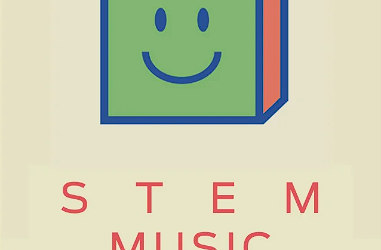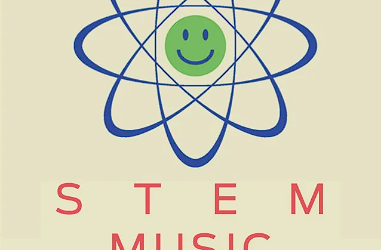STEM is an acronym for Science, Technology, Engineering and Math, an interdisciplinary approach to education. The U.S. Department of Education has set a priority of increasing the number of students who are proficient in these vital STEM fields. Over $170 million in Federal grants supporting SPED in education were awarded during the 2014-2015 school year to identify and implement effective approaches for promoting student engagement, interest, and achievement in the STEM fields. Yet today, according to the US Department of Education, Science, Technology, Engineering and Math: Education for Global Leadership (http://www.ed.gov/stem), only 16 percent of American high school seniors are proficient in mathematics and interested in a STEM career.
Why aren’t students excited about STEM subjects and motivated by STEM’s relation to their career aspirations? Getting students excited about STEM subjects is one of the biggest challenges facing educators. A study by Taylor, et al (2004) found that more than 90% of parents had little or very little influence on their children’s career decisions. The study also found that regarding influence on students’ career-development related motivation, teachers and counselors didn’t fare much better than parents.
Research by Bennett (2003) and others, tend to show that students with higher levels of intrinsic motivation will be more likely to invest more time and commitment than students with lower levels, and these high achieving students will also presumably seek assistance if they are having difficulty which will further heighten their standard of academic achievement. So the question remains: how can students become excited by and motivated to pursue STEM courses?
Music and Brain-Based Education
With the help of brain imaging, researchers have been able to confirm what many teachers have known for decades: music provides many learners with avenues of expression and emotional connection (Jensen 1998, Cercone 2006). Other researchers find that music also works as a mnemonic device because musical patterns of melody, harmony, and rhythm naturally group sound (or lyrics) into units (Gfeller, 1983; Wallace, 1994; Claussen and Thaut, 1997). Content information put into song lyrics becomes chunked through this intrinsic musical patterning. An example of musical chunking is the “ABC” song. Remember how singing that little ditty helped you remember the Alphabet?
It has been shown that students tend to pay more attention when lessons are connected with something relevant to their lives; music provides such an excellent bridge. For instance, one study reports that contemporary vocal music has been played successfully to teach reading strategies to adolescent students. The study showed they responded with higher motivation and interest to the musical instructional reading strategies and that their reading confidence and fluency improved (Rivard and Bieske 1993).
According to Rief (2012), studies of learning and recall conducted by the National Training Laboratories, Alexandria VA in the 1960s showed the length of student retention is directly proportional to the model or method used — lecture being least effective at 5%-10% after 24 hours. Discussion, teaching others, or practicing immediately after exposure to materials, was the most effective at about 85-90%. Simply put, if you want to teach effectively, make the teaching effective.
A recent focus in learning theory is brain-based education, a comprehensive approach to instruction using current research from neuroscience. It emphasizes how the brain learns naturally and is based on what we currently know about the actual structure and function of the human brain at varying developmental stages. (Sousa, 2011). One of the key tenets of brain-based education is that attention follows emotion, and music often taps into the emotional areas and thus is a natural conduit for remembering and connecting information. Music uses multiple pathways to store, therefore more ways to recall, information. This is why we remember what we experience much better than what we simply hear, see or read.
Lifestyle Learning® Music
Teenagers spend much of their recreational time listening to music. The kind of music teens listen to can have a positive influence on their intellectual, social, and psychological well-being and furnish them with information about adult life. It can create a heightened social learning context, motivate students to engage themselves more rapidly, and provides a sense of safety that might not otherwise be possible. Each of these factors adds considerably to the development of a powerful learning environment (Burko & Elliot, 1997, Weinberger, 1998).
Lifestyle Learning® Music is a unique application of this music-motivation-achievement connection. Lifestyle Learning Music incorporates knowledge of Science, Technology, Engineering, and Mathematics (STEM) in its lyrics to help kids learn. The lyrics are informative and useful in real life situations. For example, Volume #2 – Geometry, focuses on helping people who struggle with learning mathematics from a book.
Lifestyle Learning® Music engages kids physically as well as mentally and emotionally to help students maintain their attention and interest level and. get excited to learn about STEM. Volume #1 – STEM, does this by prompting students to sing and dance to the beats of science, math, engineering, and technology. It is designed to help expose children to STEM concepts and provide a general introduction to career readiness for future STEM professions. Through a variety of genres of music including pop, rap, country, reggae, and R&B, the STEM music songs help students enhance their understanding of STEM and help them understand the potential of STEM in their futures in an entertaining way.
Lifestyle Learning® Music Curriculum
After listening to songs from Volume #1 – STEM, students participate in a variety of activities that help define STEM and explore STEM-related topics and careers. The Goals and Objectives of Volume #1 are:
- Students will understand that STEM is comprised of topics related to science, technology, engineering, and math and its real-world applications.
- Students will demonstrate their understanding of STEM concepts through investigation.
- Students will design solutions for real-world problems using STEM knowledge.
Volume #1 – STEM, as do all Lifestyle Learning® Music Volumes, offers a variety of K-12 activities that can be carried out with the child at home as well as with students in the classroom or an alternative group setting (after-school programs, activity camps, etc.). All lessons are correlated with Common Core Standards, Next Generation Science Standards, and the Framework for 21st Century Learning. These standards-based lesson plans also include options for extension activities if the child/student is interested in further exploration on the topic and to offer flexibility for differentiated instruction.
Following is an example of two such activities for Grades 6-8.
Smart Phones and Tablets
Students will identify how STEM is used when creating smart phones and tablets and discover careers that are related to STEM.
Key Questions
- How does mobile technology influence our lives?
- What are different possible factors involved to produce mobile technology?
- What is STEM?
- How are STEM careers involved with technology we use in our personal lives?
Designing the Safest Egg
Students will explore Newton’s Laws of Motion and design a device that can protect an egg from cracking as it collides with another object.
Key Questions
- What are Newton’s Laws of Motion?
- What forces exist when two objects collide?
- How do factors such as surface area, air resistance, and density influence the forces acting on an egg when it collides with another object?
The value of music in a child’s education cannot be understated. There is a wealth of incontestable research showing that an education rich in music improves students’ cognitive function and academic performance. Simply put, children learn better when music is part of their school curriculum. Incorporating music education in schools has a ripple effect with benefits that extend beyond the classroom. Children who have music education are more likely to have greater self-esteem and self-confidence, participate in extracurricular activities and are less likely to drop out of school. Research shows that teachers, parents and students believe that music instruction is linked to improved social and emotional development and more creative thinking (Damkohler 2015).
Bottom line: the goal of Lifestyle Learning® Music is to foster interest and create an ongoing STEM connection with young people through the power of research-based properties of music.
References
Bennett, R. (2003). Determinants of undergraduate student dropout rates in a university business studies department. Journal of Further and Higher Education, 27(2), 123 – 141
Brewer, Chris B., (2008). Soundtracks for Learning: Using Music in the Classroom. North Carolina: LifeSounds Educational Services
Bucko, H. & Elliot, R. (1997). Hands-On Pedagogy vs. Hands-Off Accountability. Phi Delta Kappa, 80(5), 394-400.
Cercone, K. (2006). Brain Based Learning. In E. K. Sorensen and D. O. Murchu, Enhancing Learning Through Technology. Idea Group, Inc.
Claussen, D. and Thaut, M.H. (1997). Music as a Mnemonic Device for Children with Learning Disabilities. Canadian Journal of Music Therapy, 5, 55-66.
“Common Career Technical Core.” National Association of State Directors of Career Technical Education Consortium: Career Technical Education : Common Career Technical Core : Common Career Technical Core. National Association of State Directors of Career Technical Education Consortium, 2013. Web. 28 Aug. 2013.
Damkohler, K. (2015). Music Education and the Multiplier Effect. Accessed 06/17/2015 from http://www.huffingtonpost.com/katherine-damkohler/music-education-and-the-m_b_7603098.html
“Framework for 21st Century Learning – The Partnership for 21st Century Skills.” Framework for 21st Century Learning. Partnership for 21st Century Skills, 2013. Web. 28 Aug. 2013
Gfeller, K.E. (1983). Musical mnemonics as an aid to retention with normal and
learning disabled students. Journal of Music Therapy, 20, 179-189.
Jensen, E. (1996). Brain-based learning. Del Mar, CA: Turning Point for Teachers.
Jensen, E. (1998) Teaching with the Brain in Mind. Alexandria, VA: ASCD–Association
Jensen, E. (2000). Music with the brain in mind. San Diego, CA: The Brain Store, Inc.
“Next Generation Science Standards.” Next Generation Science Standards. National Research Council, 2013. Web. 28 Aug. 2013
Rief, S. F. (2012), How to Reach and Teach Children with ADD / ADHD. New York: Wiley & Sons
Rivard, J.D., & Bieske, G.B. (1993). Using contemporary music themes to increase adolescents’ confidence and reading fluency. Journal of Reading, 36(6), 492-494.
Sousa, D. A. (2011). How the Brain Learns, 4th Edition. Thousand Oaks, CA: Corwin
Taylor, J., Harris, M. B., & Taylor, S. (2004). Parents have their say. Retrieved April 10, 2010, from http://www.uncw.edu/Stuaff/career/documents/parentssay%5B1%5D.pdf
The Common Core Standards:.” Common Core State Standards Initiative. National Governors Association Center for Best Practices, Council of Chief State School Officers, Washington D.C., 2010. Web. 28 Aug. 2013.
Wallace, Wanda T. (1994). Memory for music: Effect of melody on recall of text. Journal of Experimental Psychology: Learning, Memory, and Cognition, Vol 20(6), Nov 1994, 1471-1485. http://dx.doi.org/10.1037/0278-7393.20.6.1471
Weinberger, N.M. (1998). The music in our minds. Educational Leadership, 56(3), 36-40.


